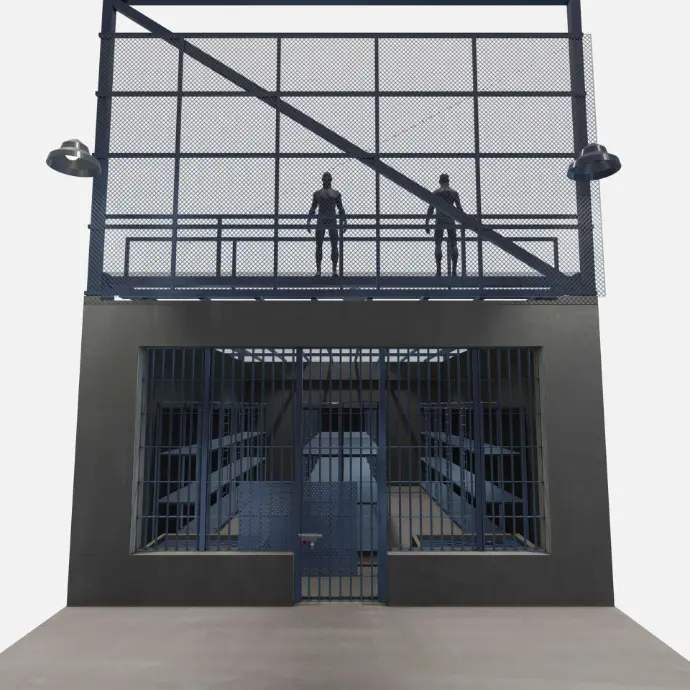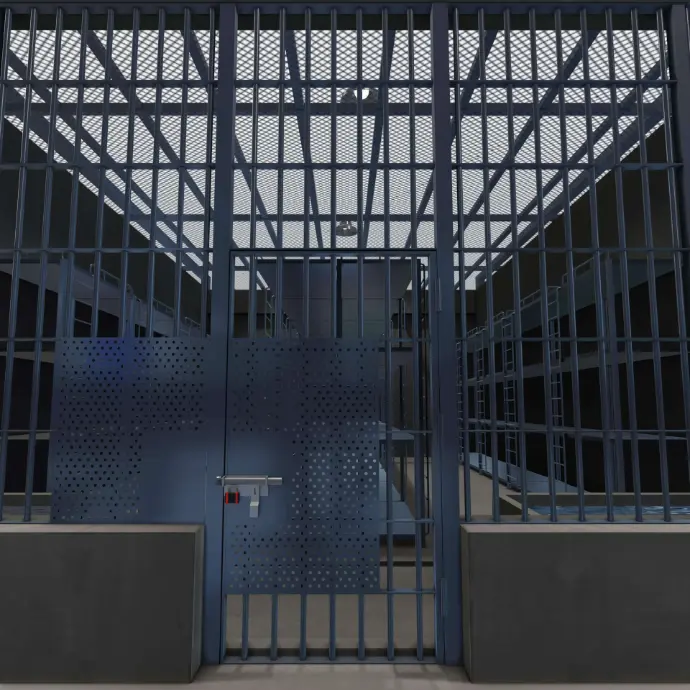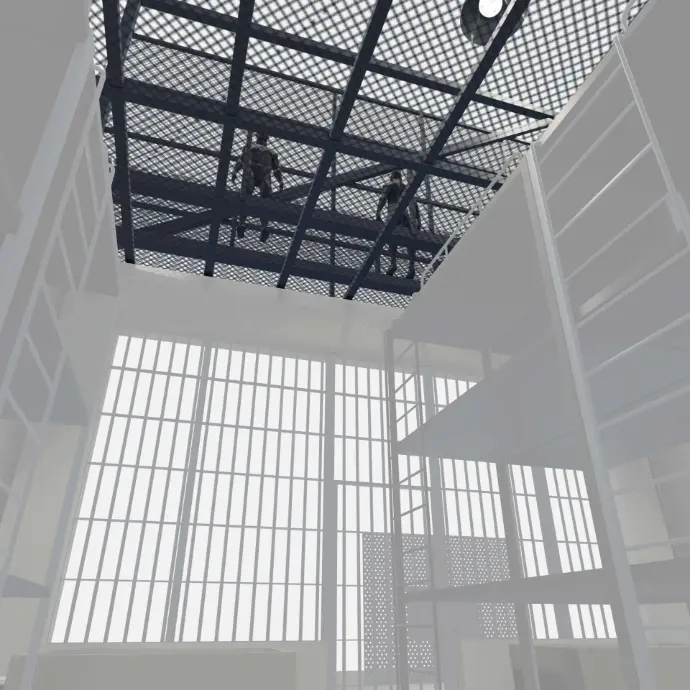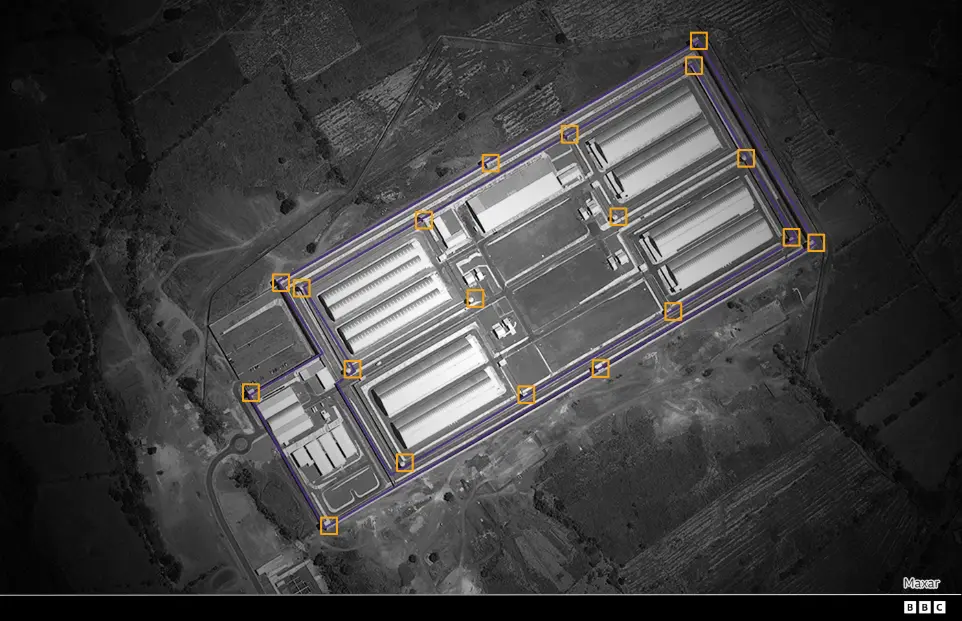The secrecy surrounding the Terrorism Confinement Center (Cecot), the controversial mega-prison that has become emblematic of President Nayib Bukele's aggressive strategy against gangs in El Salvador, has sparked intense national and international debate. This facility, presented by the government as a definitive solution to confront the chronic violence that gangs have wreaked in the country for decades, stands out not only for its magnitude and ultra-modern design, but also for the high level of secrecy with which it operates.
From its construction to its daily operations, the information leaked to the public about Cecot is limited and carefully controlled. The government has exclusively emphasized aspects that reinforce its narrative of success in the fight against organized crime, from shocking numbers of mass arrests to propaganda images showing tight control within the facility. However, this approach has raised suspicions and criticism among human rights organizations, criminal justice experts, and independent journalists, who demand greater transparency regarding the actual conditions faced by inmates and respect for judicial procedures.
Furthermore, this prison has fostered an aura of mystery not only because of its inaccessibility to outside observers, but also because of the doubts it raises regarding its long-term sustainability. Questions about operating costs, standards of inmate treatment, and the effectiveness of this strategy as a structural measure to eliminate the roots of the gang problem spark heated discussions between those who defend the government initiative and those who consider it an unsustainable model that violates fundamental rights.
Ultimately, the Cecot remains a multifaceted symbol: for some, it represents a tangible victory in an all-out war against gangs; for others, it embodies a dangerous drift toward opaque punitive policies that compromise accountability and democratic values. Thus, the secrecy surrounding it continues to cast a shadow over the public debate about the future of security and justice in El Salvador.


Aerial view of the Terrorism Confinement Center
The Terrorism Confinement Center (Cecot) was presented on national radio and television as "the largest prison in the Americas," a symbol of the Salvadoran government's radical approach to its fight against violence and organized crime.
According to authorities, the facility has the capacity to house up to 40,000 inmates. It is designated exclusively for those considered "high-ranking" in the Mara Salvatrucha (MS-13) and the two factions of Barrio 18, rival gangs that for decades accumulated power through youth recruitment and territorial control, leaving the Central American nation mired in a cycle of terror and death.
After the noisy opening, but before the prisoner transfers, several media outlets entered Cecot, but public information about the conditions in which those held there live is scarce, if not nonexistent.
After appearing in the media showing the prison complex's facilities, President Bukele used Twitter, his preferred platform to publicize his administration's achievements, proclaiming that El Salvador had gone from being "the most insecure country in the world" to becoming "the safest in the Americas." Referring to the strategy used, she added that the change had been achieved by incarcerating criminals and ensuring they could not issue orders from prison or escape. "A work of common sense," she emphasized.
With significant media coverage, the first inmates were admitted to Cecot on February 24, when 2,000 prisoners arrived. A second, similar group arrived on March 15, these being the only two transfers publicly confirmed so far.
But using videos (from the government and the press), photographs, interviews with authorities, and data verified by a technician involved in the construction, whose identity we are withholding for security reasons, we have recreated details of the mega-prison to try to provide greater context for its scale.


The beds are made of metal plates and, according to official information, do not have mattresses.
Each one is made up of three cement walls and some bars.


The Cecot has 256 cells
The ceiling is a diamond-shaped mesh with a sharp edge to prevent prisoners from hanging themselves and serves as a platform from which guards watch over them.
There are no windows, fans or extractors.

To wash or wash clothes, inmates use water from two sinks, the supply of which is controlled from outside. There are two toilets with no privacy.


If Cecot were to reach its capacity of 40,000 inmates, each cell would hold approximately 156 prisoners, provided no new buildings are built.
This is especially relevant considering that although official videos have shown a factory where prisoners would eventually work, the same authorities have explained that the cells are designed so that prisoners spend as much time there as possible, only leaving to go to the courtroom via videoconference or to isolate themselves.
In the common cells, natural light comes from skylights, lattices, and the curved roofs of the cells, which are also the only source of ventilation in a country where temperatures can exceed 30 degrees Celsius, with a relative humidity of 60%.
It is not known exactly how many prisoners there are, whether it is only the 4,000 seen in the videos of the two transfers or if there were other transfers that were not released. The criteria for transfers to the Cecot are not public, and there are doubts about the identity of those imprisoned there, whether they were detained during the emergency regime or are gang members serving sentences in other prisons.
Details about feeding routines—when, where, and what the inmates eat—are unknown. Nor is there any information about whether the facility has a kitchen, dining room, infirmary, or store. The authorities say prisoners will only leave their cells for online hearings or solitary confinement. There is no outside recreational space, and no family visits allowed, the authorities say. This contravenes international guidelines on prisoner rights.


It has eight pavilions or modules measuring 5,446 square meters, each with 32 cells.
Two fully electrified security perimeter fences with cyclone mesh and two reinforced concrete walls surround the facility. There are 19 watchtowers.
The authorities say Cecot has state of the art security - entry scanning systems, a vast surveillance network, and a well-equipped weapons room. The mega-prison - in Tecoluca, 74 kilometers (46 miles) southeast of the capital San Salvador - comprises eight buildings. Each has 32 cells of about 100 square meters (1,075 square feet) to hold "more than 100" prisoners, the government says.
The design of El Salvador's "megacárcel," the Terrorism Confinement Center (CECOT), is meticulously crafted to maximize control, surveillance, and isolation, reflecting its purpose as a high-security facility for alleged gang members.
Here are the key design features:
- Location: Strategically located in Tecoluca, San Vicente, away from urban centers. This remote placement aids in isolation and makes external interference more difficult.
- Perimeter Security: CECOT is surrounded by multiple layers of security:
- High Concrete Walls: Impressive, towering concrete walls form the primary outer barrier, reportedly over 9 meters (30 feet) high.
- Electrified Fencing: Two perimeters of electrified mesh fencing run along the walls, designed to deter any escape attempts.
- Watchtowers: Numerous surveillance towers are strategically placed around the perimeter to provide constant oversight of the exterior and internal areas.
- Advanced Control System: Entrances are heavily fortified with full-body scanners and multiple security checkpoints to control access.
- Modular Design: The prison is comprised of eight massive reinforced concrete buildings (modules). Each module functions almost as a self-contained prison, allowing for better management and segregation of inmates.
Cell Design for Maximum Control:
- Large Capacity Cells: Each building contains 32 cells. These cells are designed to hold a large number of inmates, reportedly over 100 per cell, in a space of approximately 100 square meters (1,075 square feet). This leads to significant overcrowding.
- Minimalist Furnishings: Cells are extremely spartan. They contain:
- Metal Bunk Beds: Typically four-tiered metal bunks without mattresses or sheets.
- Basic Sanitation: Two toilets and two sinks per cell, without privacy.
- Constant Illumination: Lights are kept on 24 hours a day, denying inmates a sense of day and night and contributing to psychological disorientation.
- No Windows or Ventilation: Cells lack windows, fans, or extractors, preventing natural light and air circulation.
- Overhead Surveillance: The ceiling of each cell is a mesh or grid structure that serves as a walkway for guards, allowing them to constantly monitor inmates from above.
- CCTV: Every cell is equipped with CCTV cameras for continuous surveillance.
Internal Layout for Movement Restriction:
- Limited Outdoor Access: Inmates have extremely limited time outside their cells, reportedly only 30 minutes per day for exercise or to read the Bible.
- No Recreational Areas for Inmates: There are no designated recreational or common areas for inmates within the modules, designed to prevent interaction and organized activities.
- Passageways and Control Points: The design emphasizes controlled movement through narrow passages and controlled access points.
- Security Personnel Areas: The facility does include dedicated areas for prison staff, such as dining rooms, 休息室 (rest rooms), and a gym, separate from the inmate areas.
- Control Room: A high-tech control room monitors all surveillance feeds and security systems, allowing for immediate response to any incidents.
- Isolation and Sensory Deprivation: A core design principle is sensory and social deprivation. The lack of natural light, external contact, and purposeful activities is intended to break down inmates and prevent any form of organized resistance.
- Reinforced Construction: The use of reinforced concrete throughout the facility emphasizes durability and impenetrability.
In essence, the design of CECOT is a physical manifestation of an "iron fist" policy, prioritizing security and control above all else, with minimal consideration for inmate rehabilitation or human rights standards. It's built to instill fear and demonstrate absolute state authority over those confined within its walls.

 IHRO NEWS
IHRO NEWS